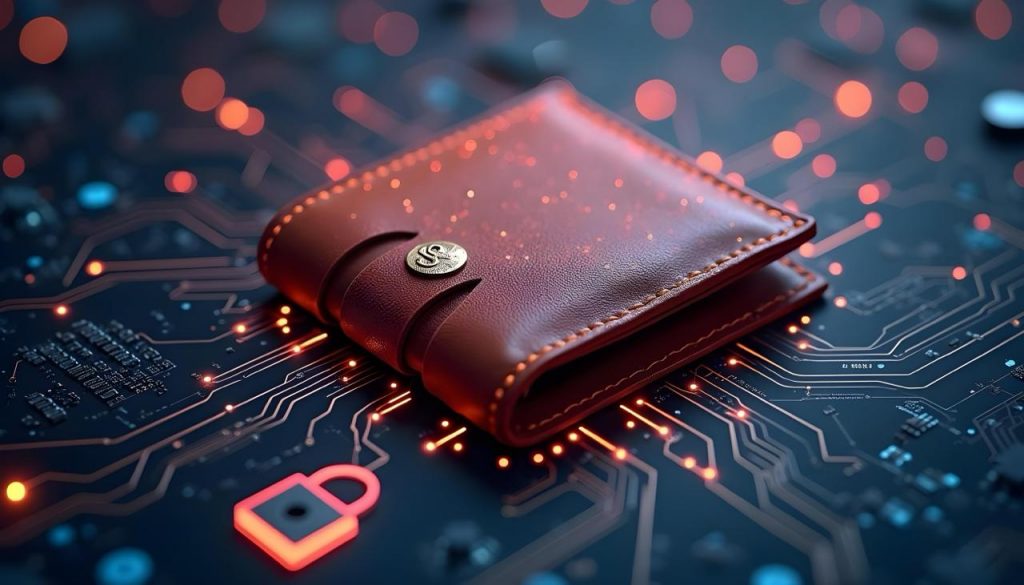If you start working with cryptocurrency, one of the first questions will be the choice between a custodial and non-custodial wallet. This choice goes beyond the technical side – it determines the degree of control, responsibility and freedom you have in managing your digital assets. Understanding the differences between custodial and non-custodial solutions is critical for both traders and long-term holders or users who make daily cryptocurrency transactions. From platform-driven wallets that offer support and convenience to non-custodial solutions with full user independence, each option has its own advantages, limitations and optimal application scenarios.
In this guide, we break down custodial vs. non-custodial crypto wallets in simple terms, helping you decide which wallet type fits your needs, your goals, and your risk tolerance. Whether you’re new to crypto or just rethinking your setup, knowing where your private keys live can make all the difference.
The Concept of Crypto Wallets
A crypto wallet is not a physical case for your digital coins, but a software tool that allows you to securely send, receive and store cryptocurrency. In fact, the wallet manages your public and private keys. A public key is your address in the blockchain used to receive funds. The private key, on the contrary, acts as a digital signature: it confirms ownership and authorises transactions. Most modern wallets use the so-called starting phrase – a set of 12-24 words that helps restore access to funds if the device is lost or damaged.
Crypto wallets come in different forms, with distinct pros and cons. Some allow you to swap assets, stake crypto, or interact with blockchain apps and NFTs. Others are purely for secure storage. The key distinction lies in control: custodial wallets delegate control of your private keys to a third party, while non-custodial wallets give you full control and full responsibility. This difference affects everything from ease of use to security and ownership.

What Is a Custodial Wallet?
A custodial wallet is a cryptocurrency solution in which private keys are managed by a third party, usually a centralised exchange or storage service. In this model, the platform acts as a digital custodial, ensuring the management of your assets and the security of operations, while the user does not get full control over his funds. You access your funds through a standard login, and if you forget your password or lose access, recovery is usually possible via customer support.
This approach is especially attractive for beginners and ordinary users who appreciate a simple and user-friendly interface without having to manage complex cryptographic keys yourself. Additional security features, including multi-signatures, cold storage and financial compliance often accompany wallet storage. Some services even provide insurance against theft or platform failures.
However, the main compromise is control. Since you do not own a private key, you trust a third party to manage and protect your cryptocurrency. In case of compromise of the custodian or its unexpected closure, access to your funds may be limited or completely lost. Despite the convenience, depositary wallets require users to weigh the ease of use against the basic principle of cryptocurrency: control over their own keys.
What Is a Non-Custodial Wallet?
A non-custodial wallet is a digital wallet that gives you full control over your crypto assets by allowing you to manage your own private keys. There’s no third-party platform holding your funds or acting on your behalf, you are the sole authority over your wallet. This setup offers greater autonomy and aligns with the original ethos of cryptocurrency: self-custody, privacy, and trustless interaction with the blockchain.
When you create a non-custodial wallet, you receive a private key and a seed phrase, typically a 12- to 24-word sequence. These are crucial for accessing and recovering your wallet. Since your funds aren’t stored on centralized exchanges, they’re protected from exchange hacks or service outages. However, this independence comes with high stakes: if you lose your seed phrase or fall victim to a phishing attack, there’s no way to recover access.
Non-custodial wallets are ideal for users who understand the risks and are prepared to take responsibility for their own security. They exist in different forms, from hardware wallets to browser extensions and mobile apps, and each offers a different balance of convenience and protection.
Benefits of Custodial and Non-Custodial Wallets
Custodial wallets are ideal for users who appreciate simplicity, convenience and professional support. Since a trusted third party manages private keys, there is no need to understand complex security processes. If you forget your password or lose your device, the support service will help you restore access to your account. These wallets usually have intuitive interfaces and are easy to navigate, which makes them a great choice for beginners or those who are not too confident in technology. Many services also comply with regulatory standards and implement advanced security measures, including encryption, multi-signature and insurance coverage.
Non-custodial wallets can provide the user with full ownership and control over the funds. Owning private keys ensures that third parties cannot access or freeze your assets. This approach is consistent with the principles of decentralisation and financial autonomy.
Cold wallets operating completely offline provide a high level of protection against cyber threats, while hot wallets allow you to make fast transactions with minimal delays and commissions. For users who value confidentiality, full control and reliability, non-custodial solutions remain the preferred choice.
Limitations
The use of a custodial wallet implies the transfer of control over your funds to a third party. The provider stores your personal keys, similar to how the bank manages customers’ deposits. This approach provides convenience and simplifies asset management, but involves certain risks.
If the platform is hacked, closed or changed the access policy, you may lose the ability to manage your cryptocurrency. In addition, there may be restrictions on withdrawals, transaction delays or blocking, depending on the region and current legislation. Despite the convenience, the means in this case are not completely under your control.
Non-custodial wallets provide full control over assets, but place full responsibility on the user for their security. The loss of the initial recovery phrase or private key makes the funds unavailable because it is not possible to reset the password or contact the support service. The user must ensure reliable storage of information to restore access – any error can lead to irreversible loss of funds. For some, it provides independence and control, for others it creates an increased burden and risk.
Ownership and Privacy
When it comes to crypto, control is everything. With custodial wallets, someone else holds your keys, and that means they call the shots. These platforms usually follow KYC and AML laws, so your identity is tied to your wallet. If needed, they can freeze or even hand over your assets. You’re not really the owner, you’re just a user with access.
Non-custodial wallets flip that. You hold the keys, so only you can access or move your funds. There’s no registration, no ID check, and no one watching over your shoulder. You get more privacy and true ownership. No one can freeze your wallet or block your transactions. But with that freedom comes full responsibility. If something goes wrong, there’s no support team to call. You’re in control but you’re also on your own.

Security and Recovery
Custom wallets make working with cryptocurrency similar to online banking: you log in with a password, you may use two-factor authentication, and if you encounter any issues, the support service can help. This provides convenience, but imposes risks: if the platform is hacked, bankrupt or restricts access, your assets may be lost. The user transfers control and responsibility to a third party.
Non-custodial wallets exclude an intermediary – your funds are not stored on the company’s server, which reduces the risks of external influence. At the same time, all responsibility for security lies with the owner: the loss of the recovery phrase or private key will lead to an irreversible loss of funds. Security depends solely on your compliance with the key storage and protection procedures. This approach provides full control over assets, but requires high discipline and attention.
Ease of Use
Custodial wallets are built for convenience. They work a lot like traditional finance apps: log in, make a trade, reset your password if needed. You don’t have to deal with keys, seed phrases, or technical setup. If something goes wrong, there’s usually a support team to help. For anyone new to crypto, this can make the learning curve feel a lot less steep.
Non-custodial wallets, on the other hand, put you in the driver’s seat. That means more freedom, but also more to figure out. You’ll need to understand how to store your keys, sign transactions, and keep your wallet backed up. There’s no “forgot password” button if you lose access. It’s a great option for people who want total control, but it’s not always beginner-friendly. If you’re not ready to take full responsibility, the added complexity can feel overwhelming.
Transaction Speed and Fees
Custodial wallets often make transfers between users on the same platform fast and cheap or even free, since those transactions don’t always hit the blockchain. It’s more like updating balances within a database. But when you send funds out to an external wallet, things change. You may face network fees, slower confirmation times, and limits set by the provider.
Non-custodial wallets, by contrast, interact directly with the blockchain for every transaction. That means you get transparency and control, but also network fees that can spike during busy times. Transactions can take longer time to confirm, depending on the traffic and blockchain used. You’re paying for independence with both cost and time.
Non-Custodial Wallet Example
A non-custodial wallet can be a software application or hardware device in which the management of private keys is completely in the hands of the user. Hardware wallets, or “cold” wallets, store keys offline, which provides a high level of security. This configuration makes them one of the most reliable ways to store cryptocurrency, especially for long-term investments, minimising the risks of cyberattacks. To keep them secure, many users store these devices in safes or other protected locations.
On the other hand, non-custodial software wallets, sometimes referred to as Web3 wallets offer a more flexible option for everyday use. Non-custodial software wallets provide full control over keys with the convenience of interaction with decentralised applications and fast transactions. While hardware wallets are focussed on maximum security, non-storage software solutions offer an optimal balance between control and ease of access. Both types of wallets reflect the key principle of self-service in cryptocurrency.
Funds Backup and Recovery
In case of custodial wallets, recovering access is usually as simple as resetting a password. Since the platform manages your private keys, you can reach out to customer support if you get locked out. As long as you can verify your identity, your funds are still there. This safety net is one of the main reasons many beginners prefer custodial wallets.
Non-custodial wallets work very differently. There’s no backup team, just you and your recovery phrase. This phrase is a set of 12 to 24 words generated when you first set up your wallet. It’s the only way to restore access if your device is lost, stolen, or wiped. If you lose the phrase, your funds are gone for good. That’s why it’s crucial to store it securely, offline, in multiple safe locations if possible. With non-custodial wallets, backup and recovery are 100% your responsibility.
Offline Accessibility
Custodial wallets are completely dependent on a permanent connection to the Internet to access funds. They interact with centralised servers to confirm identity, open an account and process transactions. If the platform is unavailable or there is no network, the user actually loses access to his assets. A constant online connection also increases the wallet’s vulnerability to cyber threats.
Non-custodial wallets provide the user with full control and a high degree of flexibility. Software wallets work through browsers or mobile applications and require an Internet connection only to interact with the blockchain, while the private keys remain with the owner. Hardware wallets provide fully offline key storage and transaction signing without connecting to the network, which minimises the risk of hacking. The user connects to the blockchain exclusively for transactions, after which the device is turned off again. This architecture makes hardware wallets the optimal solution for long-term storage of cryptocurrency, providing the maximum level of security and control over assets.

Custodial Wallet Examples
As a rule, custodial wallets are provided by large cryptocurrency exchanges and financial platforms. These providers manage your personal keys and provide technical security, simplifying access to assets and cryptocurrency trading without the need for self-administration. Among the most famous storage wallets are Binance, Coinbase, Kraken, and Bitgo.
Often, such wallets are integrated with exchange accounts, allowing users to store funds, make transactions and use additional services, including staking and conversion to fiat, within a single platform. Due to the ease of use and built-in support, custodial wallets are especially in demand among beginners and irregular investors. At the same time, this approach implies trust in the provider in terms of security and regulatory compliance, which limits the user’s direct control over his assets.
Which Wallet Type Is Right for You?
The choice between a custodial and non-custodial wallet is determined by the level of your experience and the degree of control you want to have over cryptocurrency assets. For beginners focussed on simplicity and convenience, a storage wallet may be the preferred option. This approach eliminates the need for independent management of private keys, and the support service ensures a prompt solution to possible problems.
For users who value confidentiality, autonomy and full control over funds, a non-custodial wallet will be more suitable. It requires increased liability, but ensures full ownership of assets. Options include hardware wallets and mobile applications, the choice of which depends on the level of technical training and security requirements.
Ultimately, there is no universal solution. The optimal choice is determined by the user’s comfort in risk management, strategic goals of working with cryptocurrency and the desired level of independence in the storage of digital assets.
FAQ: Custodial vs. non-custodial wallets
A private key is a unique, encrypted code that gives you full control over your crypto assets. It’s used to sign transactions, prove ownership, and access your funds. If anyone else gets it, they can take your crypto, so it must be kept secret and secure at all times.
Yes, non-custodial wallets can be very safe if used correctly. Since you control the private keys, your funds aren’t exposed to third-party risks like exchange hacks. However, security is entirely your responsibility. In case you lose your private key or recovery phrase, there’s no way to recover your assets. Proper backup and storage are essential.
The biggest risk is that you don’t control your private keys the provider does. If the platform is hacked, closes, or freezes withdrawals, you could lose access to your funds. You’re trusting a third party to keep your crypto safe.
For most beginners, a custodial wallet is easier to start with. It works like a regular app with no need to handle private keys or recovery phrases right away. As you learn more, you might switch to a non-custodial wallet for more control and security.
It depends. Non-custodial wallets can be more secure because you hold the keys, but only if you manage them properly. If you lose your seed phrase or fall for a scam, your funds are gone. Custodial wallets rely on the provider’s security systems. They’re easier to use, but if the platform gets hacked or collapses, your crypto could be at risk. So, non-custodial offers more control, but it also demands more care.
A seed phrase is a set of 12 to 24 random words that acts as a backup to your non-custodial wallet. It’s the only way to recover your funds if your device is lost, broken, or wiped. Think of it as the master key to your crypto. If you lose it, you cannot access permanently. If someone else gets it, they can steal everything. That’s why storing it securely and privately is absolutely critical.
You are not limited to one type of wallet. Experienced users often can use both custodial and non-custodial wallets. A depository wallet provides operational access to funds and integration with the exchange, while a non-custodial, especially hardware, is optimal for long-term storage of assets and interaction with DeFi protocols. It is reasonable to choose the type of wallet depending on specific needs, similar to how you can have both checking and savings accounts for different financial purposes.
Conclusion
Your level of comfort with control and responsibility for assets determines the choice between a custodial and a non-custodial wallet. Custodial wallets offer ease of use, built-in support and instant access to funds, which makes them the best solution for beginners. Non-custodial wallets provide full control and confidentiality, but require a deep understanding of key management and protection. There is no universal solution – it is important to choose something that meets your goals and level of experience.
If you need help choosing or setting up your wallet, we are ready to guide you through the whole process. Whether you are a beginner or looking to improve your crypto security, we will help you evaluate the options and choose the optimal wallet configuration that meets your needs.




